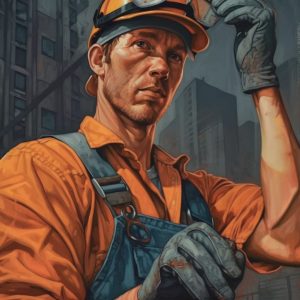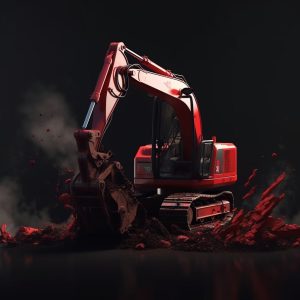Construction machines are heavy machinery and equipment used in the construction industry for tasks such as excavation, grading, paving, and demolition. They include excavators, bulldozers, backhoes, loaders, graders, and many others. Each machine has its own specific function and design, but in general, they work by using a combination of mechanical, electrical, and hydraulic systems to perform its tasks. For example, an excavator has a long arm with a scoop or bucket on the end that can be used to dig and move earth, while a bulldozer has a large blade that can be used to push and level dirt. The operator sits in a cab and uses controls to move the machine and its attachments, such as the arm and bucket of an excavator or the blade of a bulldozer. These controls are connected to the machine’s systems, such as the engine, transmission, and hydraulic pumps, which power the movement of the machine and its attachments.
For example, an excavator is a construction machine that is used for tasks such as digging, grading, and demolition. It typically consists of a cab for the operator, a boom arm, a stick arm, and a bucket or other attachment on the end of the arm.
The cab is where the operator sits and controls the movement of the machine. The cab typically has a seat, controls for the movement of the machine, and a monitor that displays information about the machine’s systems.
The boom arm is the main arm of the excavator that is attached to the cab. It is typically the longest arm of the excavator and is used to reach and dig into areas that are not easily accessible by the operator.
The sticking arm is the shorter arm of the excavator that connects the boom arm to the bucket or other attachment. It is used to control the position of the bucket or attachment and to adjust the digging angle.
The bucket or other attachment is the part of the excavator that is used to dig, move, and carry material. The bucket is typically a scoop or claw that can be used to dig into the ground and move earth, rock, or other materials.
The excavator uses a combination of mechanical, electrical, and hydraulic systems to move the boom arm, stick arm, bucket, or other attachment. The operator uses controls in the cab to move the machine and its attachments. These controls are connected to the machine’s engine, transmission, and hydraulic pumps, which power the movement of the device and its attachments.
The hydraulic system in an excavator is responsible for providing the power to move the boom arm, stick arm, and bucket or other attachments. It works by using pressurized fluid to drive the movement of the machine’s mechanical components.
The hydraulic system consists of several main components: a pump, control valves, actuators, and hydraulic cylinders. The pump is driven by the excavator’s engine and is used to generate and maintain the pressure of the fluid. The control valves are used to regulate the flow of fluid to the various actuators on the machine. The actuators are the mechanical components that convert the fluid pressure into motion, such as the cylinders that move the boom arm and stick arm.
To ensure that the excavator’s hydraulic system is working properly, regular maintenance should be performed. This includes checking the fluid levels and condition, inspecting the hoses and connections for leaks or damage, and monitoring the performance of the pump and valves. In addition, regular cleaning of the system is important to prevent contamination and clogging.
Other maintenance tasks that should be performed include checking and adjusting the tension of the tracks, inspecting the wear of the bucket teeth and cutting edge, checking the filter and lubricant oil, checking the brake and clutch system, and monitoring the general condition of the machine.
It is recommended to follow the manufacturer’s recommended maintenance schedule, which will vary depending on the specific model and usage of the excavator. It’s always a good idea to keep a maintenance log for the machine, which will help you keep track of when maintenance was performed and what needs to be done in the future.









